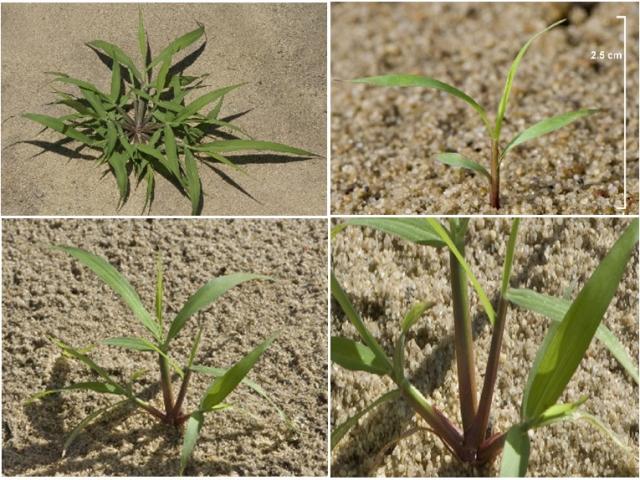Panic grass

Panic grass (clockwise from top left) - small plant, seedling and close-up of distinctive red-purple stems radiating from the crown at about 45°
Panic grass (Panicum maximum syn. Megathyrsus maximus) is a leafy, bunch grass with good palatability and feed quality. It has performed well on sandy soils in the northern agricultural region and in field trials on the south coast. Varieties include Gatton and green panic (cv. Petrie).
Seedlings may be identified by:
- leaf blades that are flat and slightly shiny with a smooth surface, often in pairs opposite each other on the stem
- generally semi-erect to erect growth habit, tillers radiating from the crown at about 45° from the ground (see bottom right picture above)
- good early vigour (see Table 1).
Variety differences:
- Gatton panic: dark green, hairless leaves with more pronounced mid-rib and red-purple pigmentation on smooth, lower stems.
- Green panic: distinctive light-green foliage (almost appearing nitrogen deficient), some hairs on lower leaves and stems, green stems (no red-purple pigmentation).
